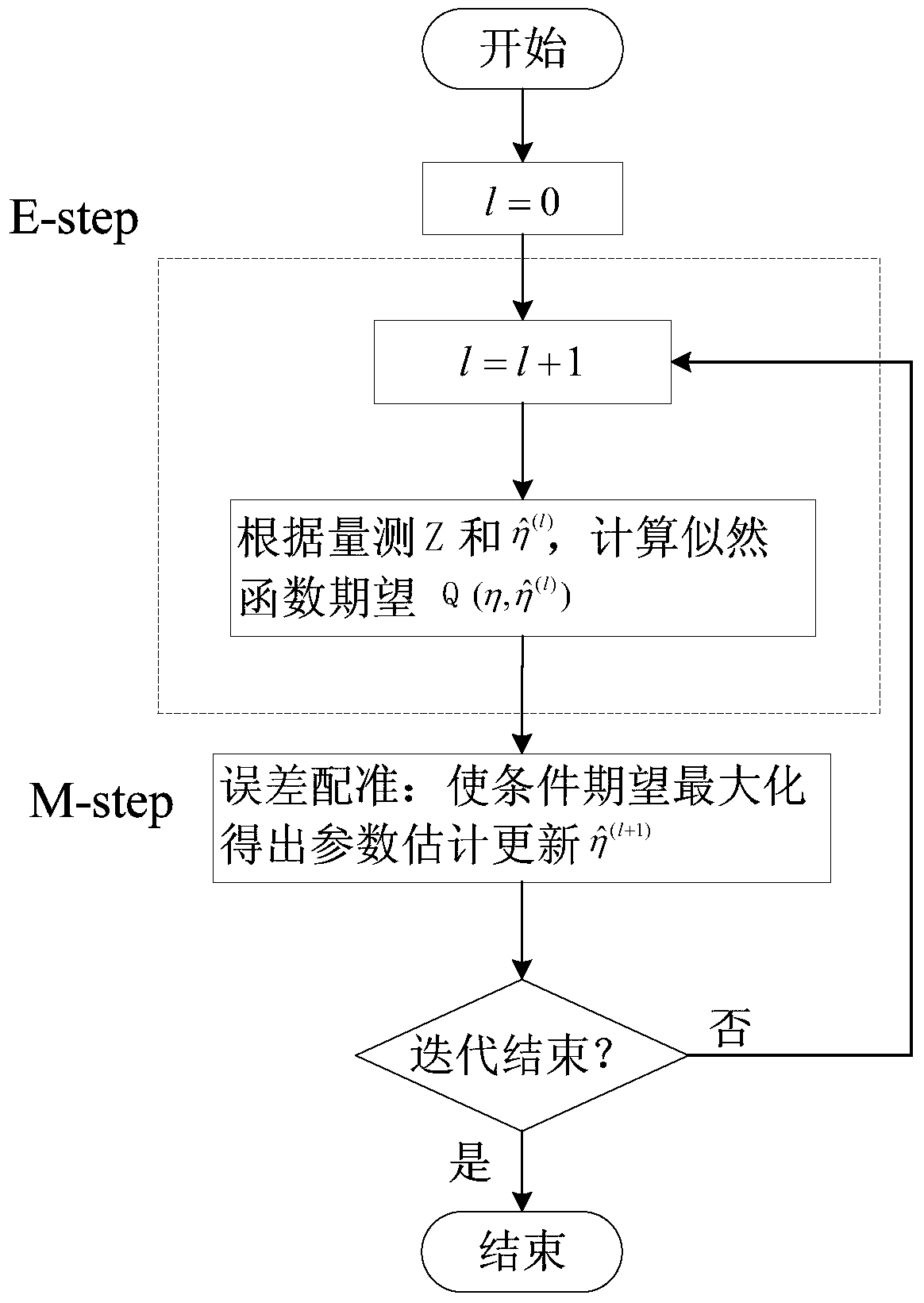Spatial registration method for multi-source ranging sensors based on expectation maximization
A technology of maximizing expectation and ranging sensor, applied in the field of navigation and positioning, it can solve the problems of inability to perform registration and registration, unsatisfactory and other problems, reduce storage space and time cost, improve real-time performance, and improve estimation accuracy. Effect
- Summary
- Abstract
- Description
- Claims
- Application Information
AI Technical Summary
Problems solved by technology
Method used
Image
Examples
Embodiment Construction
[0035] The present invention will be described in detail below in conjunction with the accompanying drawings and embodiments.
[0036] The spatial registration algorithm of multi-source ranging sensors based on expectation maximization includes the following steps:
[0037] In the first step, the smoothing value for the first round is initialized. This spatial registration algorithm is aimed at sensor registration and target positioning in a multi-source ranging and positioning environment, such as figure 1 As shown, the algorithm embeds an iterative Kalman filter smoother (IEKS) into the EM algorithm, and the IEKS algorithm requires an initialized state value and covariance. In the entire spatial registration algorithm process, filtering, smoothing, and EM solution are performed in sequence, and the smoothing value of the previous round is needed in the filtering process. In actual situations, the state of the target cannot be obtained directly through measurement, because ...
PUM
 Login to View More
Login to View More Abstract
Description
Claims
Application Information
 Login to View More
Login to View More - R&D Engineer
- R&D Manager
- IP Professional
- Industry Leading Data Capabilities
- Powerful AI technology
- Patent DNA Extraction
Browse by: Latest US Patents, China's latest patents, Technical Efficacy Thesaurus, Application Domain, Technology Topic, Popular Technical Reports.
© 2024 PatSnap. All rights reserved.Legal|Privacy policy|Modern Slavery Act Transparency Statement|Sitemap|About US| Contact US: help@patsnap.com










